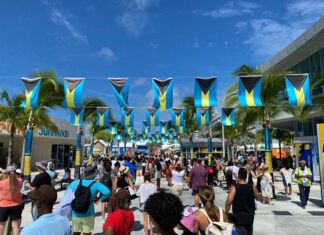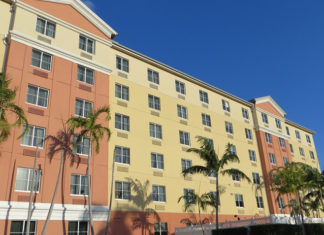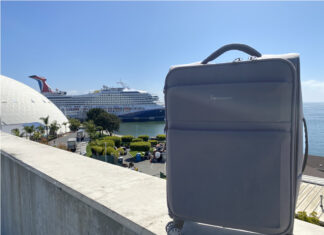Sail on just about any major cruise ship, and it’s almost certain that you are boarding a foreign vessel — even if you get on the ship in the United States.
Wait, what?
That’s right. The United States is the largest cruise market in the world, and it is home to the headquarters of major cruise lines like Carnival and Royal Caribbean. Meanwhile, ships homeport in American cities from Seattle to Miami to New York, and take on thousands of American passengers each trip. Despite that, nearly all major cruise ships are actually registered in foreign nations.
So why is this the case? And what does it mean for your cruise? Here’s what you should know.
What It Means for a Ship to be “Flagged”
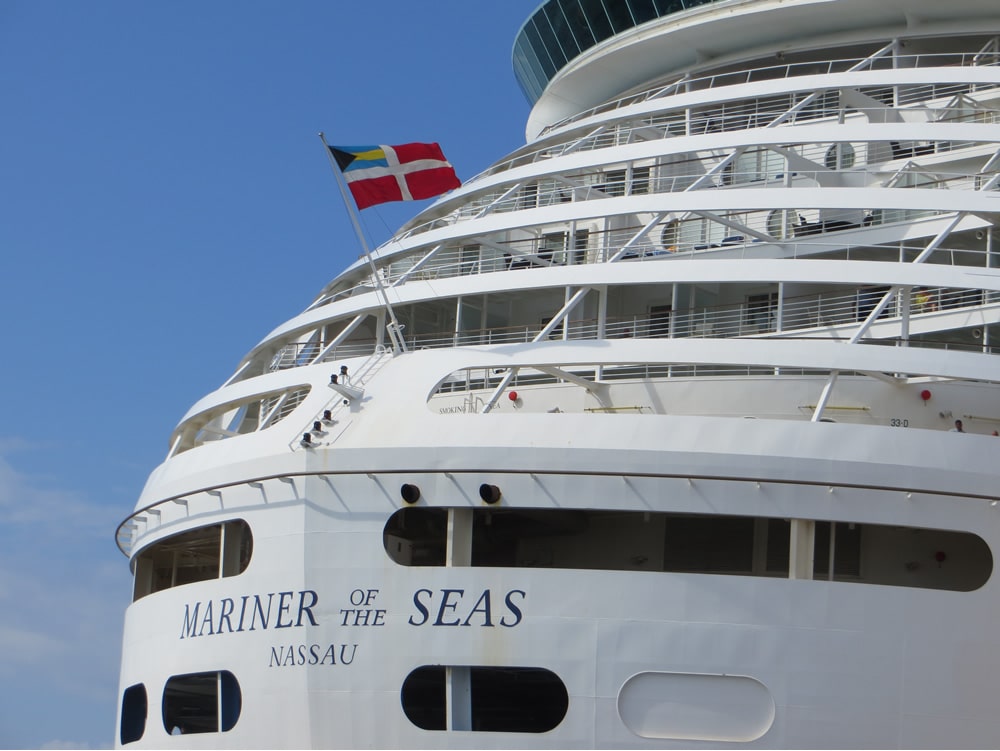
Before getting too far, it’s important to understand what exactly it means for a vessel to be “flagged.”
Put simply, a merchant vessel like a cargo ship or a cruise ship is required to be registered — or flagged — in a country. This country is known as the “flag state.” If you’ve ever been around a port, you’ve likely noticed that every ship has its name on the back, plus the name of a country, or major city within that country. This is the ship’s flag state.
Think of it as a driver’s license. If you live in Florida, your driver’s license shows that the state has qualified you to drive, even if you are on the road in California.
What might surprise you is that ships don’t have to be flagged where they are homeported. In fact, for some vessels like cargo ships, this would be impossible as they are always on the move. Even cruise ships sail from port to port, and often change homeports throughout the year. Having to change the flag state regularly for a ship that sails around the world would be unfeasible.
Since ships are international in nature, it makes sense to flag them in areas that are most friendly to their needs. This practice is what’s known as using a “flag of convenience.” It’s similar to the way that many corporations in the United States are located in Delaware, despite possibly having limited operations there.
In the case of vessels like cruise ships and cargo ships, the best options for them are typically smaller nations such as Panama, the Bahamas, Malta, and Liberia. For example, as of a few years ago about 8,600 ships were flagged in Panama according to BBC.com, compared to about 3,400 in the United States.
Why Cruise Ships Are Almost Always Foreign-Flagged
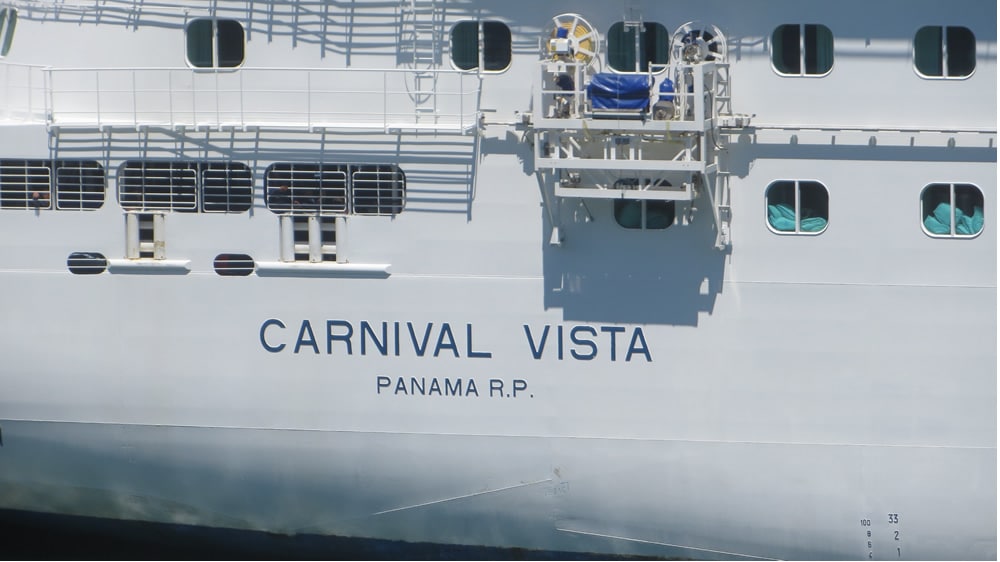
So why exactly is it so much better for a cruise ship to be flagged in a country like the Bahamas or Panama when they have such large operations in the United States?
To be sure, there are plenty of reasons large and small that one country might be better than another for registry purposes.
Cruise Lines International Association told USAToday that factors include “the capabilities of the flag to deliver the services needed; representation and reputation of the flag in the international shipping community; the performance of the flag state, which dictates how a ship is prioritized by port states; the pool of seafarers able to meet the needs of the flag; and the flag’s fees/charges and taxes.”
We also asked the cruise lines directly, but didn’t hear back.
But when it comes to flagging ships, one thing stands out as the biggest factor: lower costs. Specifically, the cost of crewing the vessel and costs of operating the ship can be much higher in the United States versus some foreign countries.
Crew Costs Make a Difference
According to a report from the U.S. Department of Transportation that explored the costs of operating a foreign-flagged merchant ship versus U.S. merchant ships, the average daily crew cost for U.S.-flagged ships was approximately 5.3 times that of foreign-flagged vessels.
Now, this report didn’t look specifically at cruise ships — after all there is only one major cruise ship that is flagged in America, so it’s difficult to get enough data to compare.
But as you know, cruise ships have a large number of staff. Royal Caribbean’s Symphony of the Seas — the world’s largest cruise ship — has 2,200 crew members. It is registered in the Bahamas.
According to Business Insider, of the 35 current and former cruise ship employees they interviewed, there was a median monthly earnings of $2,600. But 40% of these workers made $2,000 or less per month. While employees do get things like room and board included, they also work notoriously long hours.
Why is crew so much more expensive on a U.S.-flagged ship? Ships registered in the U.S. have to hire American citizens to crew the ships to comply with American law. But foreign-flagged vessels from certain countries can hire from less expensive foreign labor pools.
If you’ve cruised before, you’ve likely noticed that the staff is truly global, coming from everywhere including China, Philippines, India, and many more.
In the Department of Transportation report, they stated that “as is true for most industries employing U.S. citizens, carriers suggested that the “Citizen Crew Requirement” results in higher manning requirements, higher wages, and higher benefits compared to foreign registries.”
Operating Costs & Insurance Are Other Factors
In addition to the cost of crewing a ship, it’s also more expensive to have a U.S.-flagged ship when it comes to other operating costs such as repairs and insurance.
Take maintenance and repairs. In 2010 testimony to the House of Representatives, Maritime Administrator David Matsuda pointed out that U.S.-flagged ships are hit with a 50% ad valorem duty on repairs done in a foreign shipyard. The U.S. Department of Transportation said that a staggering 89% of those it surveyed said that this duty “negatively impacts their decision to flag under the U.S. registry.”
Insurance and liability is another factor to consider. With thousands of passengers and crew on the ship at any time, incidents are bound to happen. And according to the Department of Transportation, insurance costs can be four to five times higher in the United States compared to foreign registries. The reason? The report points to increased liability costs associated with personal injury for U.S. carriers.
Taxes and Foreign Cruise Companies
What about taxes? Many people point to U.S. tax avoidance as a reason that ships are flagged in foreign countries.
While being foreign-flagged doesn’t hurt, the tax benefits — especially federal income taxes — seem to be a big reason cruise companies are incorporated in foreign nations, instead of the United States.
Carnival Corporation is incorporated in Panama. Royal Caribbean Group is based in Liberia. And Norwegian Cruise Line Holdings is in Bermuda. Since the cruise companies are actually foreign entities, it makes sense they would fly under a flag other than the United States.
All the major cruise lines point to something called “Section 883” of the Internal Revenue Code in their financial filings. This section of the tax code says that foreign companies are not subject to U.S. federal tax if they earn income from the international operation of ships, the company meets rules for ownership of its stock, and the country they are based in grants a similar exemption to American vessels.
You might guess that Panama, Liberia, and Bermuda grant these exemptions.
The Drawbacks of Not Being Flagged in the United States
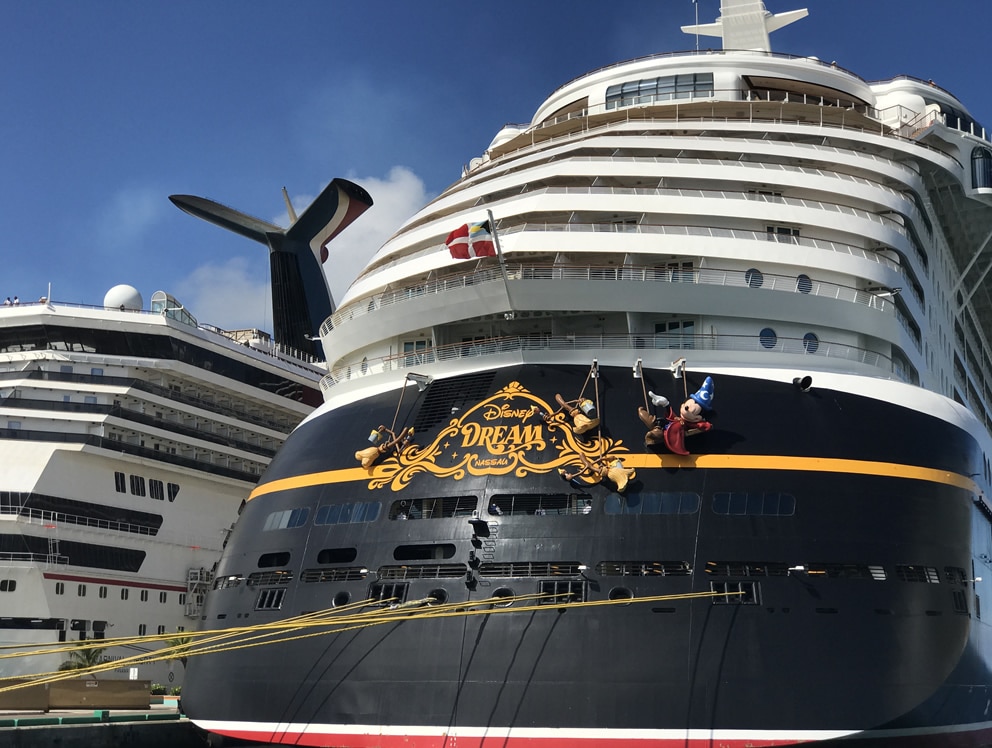
Of course, while there are benefits to being a foreign-flagged vessel, there are also drawbacks.
The first we saw during the recent health crisis. As cruises stopped in the face of the pandemic, they had to figure out a way to survive while earning no revenue. While many industries saw government bailouts, cruise lines were excluded due to their foreign status. Many pointed to the fact that so many ships are flagged outside the U.S.
Instead, cruise companies had to issue large amounts of stock and take on debt to see through the pause in operations.
As well, there are rules regarding the itineraries of foreign-flagged cruise ships when sailing from the United States. You’ll notice that cruise ships make a stop in a foreign port before returning back to the U.S. Laws surrounding the carrying of passengers on foreign-flagged ships mean that you can’t take a cruise with stops only in the United States.
Because of this rule, it was actually the Canadian government that first put an end to the Alaskan cruise season in 2020. Canada banned large ships from docking in their ports.
Without the chance to stop in Canada, cruises to Alaska — which typically stop in Victoria, British Columbia to satisfy the U.S. laws — were effectively cancelled even if the United States CDC had lifted the “No Sail Order” it had in place.
If a cruise ship does want to sail from U.S. port to U.S. port — without stopping in a foreign country — then they have to be flagged in the United States, which also means having an American crew.
At this time there is one major cruise ship that does this: Norwegian Cruise Line’s Pride of America. This ship sails the Hawaiian islands, where it would be difficult to visit a foreign port on a trip given the location.
Among the biggest challenges was finding Americans to work the ship, according to an NPR story regarding the launch of the vessel about 15 years ago. Not only are there the cost considerations, but many foreign crewmembers are familiar with the hard work and long hours that go into working on a cruise ship.
Notably, despite Pride of America being around for more than a decade, other major cruise lines haven’t followed suit in offering Hawaiian trips on U.S.-flagged vessels — or anywhere else.
What Foreign-Flagging Means for Passengers
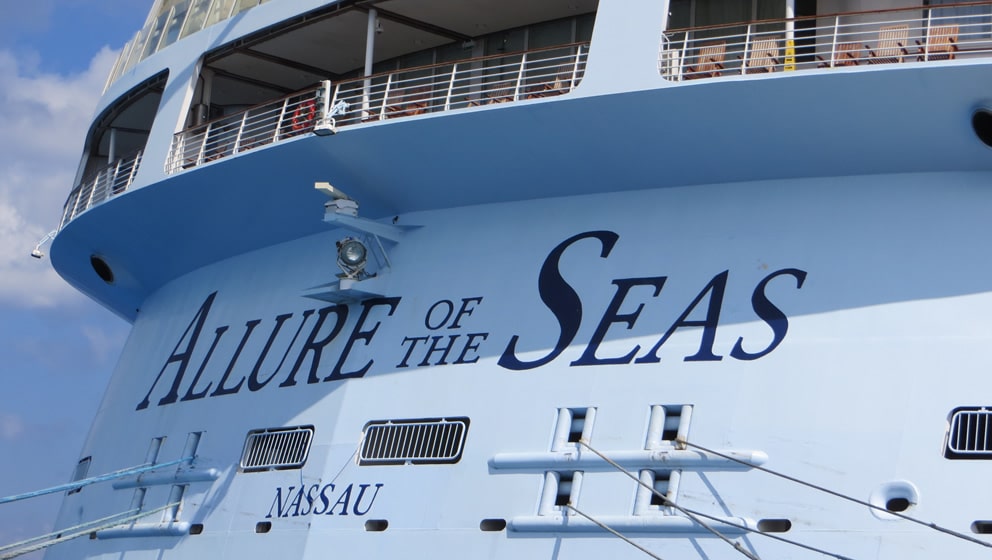
So what does sailing a foreign-flagged vessel mean for passengers?
To be honest, most passengers will never even notice, as it has little day-to-day impact on their vacation.
On the positive side, cruising is known for being affordable, and that is obviously tied to the costs to operate the ship. If it is less expensive for a cruise ship to operate under a foreign-flag, then it allows for less expensive cruise fares than otherwise. Where else can you get a week-long trip to the Caribbean, all your food and entertainment included, and not break the bank?
But there is a negative aspect. Although rare, accidents and crime can occur on a cruise. Here, the legal situation can get complex. Everything from where the ship sailed from, where the incident occurred, and where the ship is flagged can all have an impact on how the incident is handled. Thankfully, this impacts relatively few passengers, but for those it does affect, the consequences can be frustrating.
And don’t get the impression that ships don’t have any oversight from U.S. authorities. When sailing from a U.S. port, ships have to follow many American rules and regulations. That’s why the CDC has the ability to issue “No Sail Order” and perform ship health inspections. It’s also why in the case of crime, the FBI holds some authority in investigating.
Even so, for the vast majority of those on the ship, they never even notice that a ship sails under a foreign flag or understand why.


